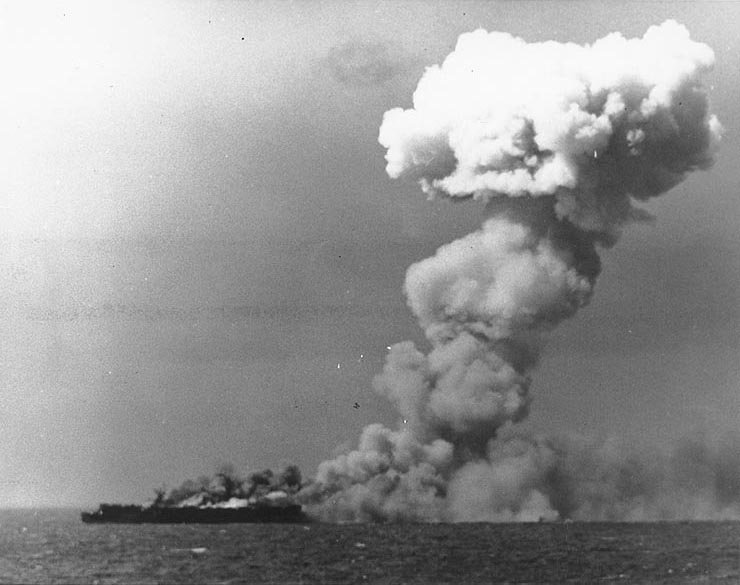RARE! WWII USS Princeton Battle of Leyte Gulf “TYPE ONE” U.S. Navy Combat Battle of the Philippine Sea Press Photograph














RARE! WWII USS Princeton Battle of Leyte Gulf “TYPE ONE” U.S. Navy Combat Battle of the Philippine Sea Press Photograph
Comes with a hand-signed C.O.A.
Size: 7 x 9 inches
This rare and museum-grade World War II “TYPE ONE” Battle of Leyte Gulf combat U.S. Navy photograph of the Associated Press shows the USS Princeton fighting fires after taking a direct hit from a Japanese plane during the Battle of the Philippine Sea. This type one combat photograph shows other ships moving in to assist the USS Princeton until the fires entered the ship magazine and she was last.
What makes this even more rare is that this TYPE ONE still has the original hand-typed press caption. Type One photographs are very rare as they are the first high-gloss prints from original combat negative camera images and contain the original marker stamps on the backside noting the photography information. This is a once-in-a-lifetime chance to own an original TYPE ONE combat photograph from the USS Princeton/Battle of the Philippine Sea.
Built at Camden, New Jersey, USS Princeton (CVL-23), an Independence-class aircraft carrier, was commissioned in February 1943. Originally built to be USS Tallahassee (CL-61), she was converted and designated CV-23 until July. Ordered to the Pacific, Princeton supported landings at New Guinea, and Saipan, and participated in the Battle of the Philippine Sea.
The Battle of Leyte Gulf, also known as the Second Battle of the Philippine Sea, was the largest naval battle in modern history. It was fought in the Pacific Theater of World War II, in the seas surrounding the Philippine island of Leyte, from October 23 to October 26, 1944, between the Allies and the Empire of Japan. The Allies commenced the invasion of Leyte in order to cut off Japan from her South East Asia colonies and hamper the source of crucial oil supplies for the Imperial Japanese Navy. The Japanese gathered all their remaining major naval forces in an attempt to repel the Allied troops, but they failed to achieve their objective and also suffered heavy losses. The battle was the last major naval engagement of World War II; the Imperial Japanese Navy never again sailed to battle in such large force, being deprived of their fuel, returning to Japan to sit inactive for the remainder of the war until April 1945, and Operation Ten-ichi-go (meaning "Operation Heaven One") when the Japanese Navy sent its remaining ships, including the Battleship Yamato on a suicide mission against the Allied force invading Okinawa.
The "Battle" of Leyte Gulf was actually a campaign consisting of four interrelated battles: The Battle of the Sibuyan Sea, the Battle of Surigao Strait, the Battle of Cape Engaño, and the Battle off Samar.
The first use of kamikaze aircraft was during this battle. A kamikaze hit the Australian heavy cruiser HMAS Australia, on October 21, and organized suicide attacks by the "Special Attack Force" began on October 25. The crushing of the Japanese navy resulting from this allied victory raised questions about the necessity of dropping the Atomic bomb on Hiroshima and Nagaski, which for some undermines the morality of the war. Could Japan, unable to launch a naval defense have resisted indefinitely, so that only the nuclear option could end the conflict? These questions for many are answered by the ferocity with which the Japanese fought to the last man in the battles for the islands of Saipan, Tinian, Guam, Iwo Jima, and Okinawa. At the close of World War II, such awaited any invader of the Japanese home islands.